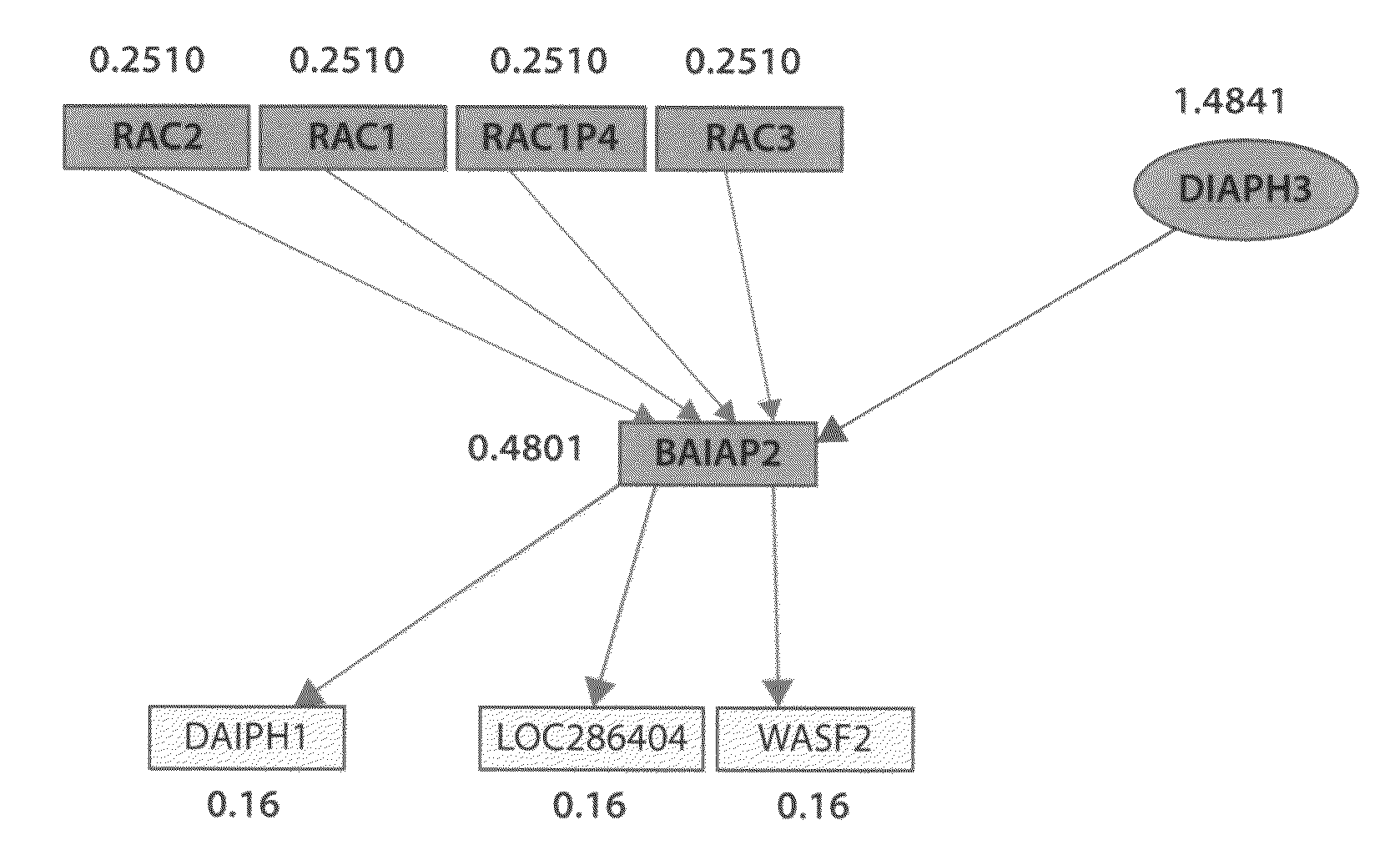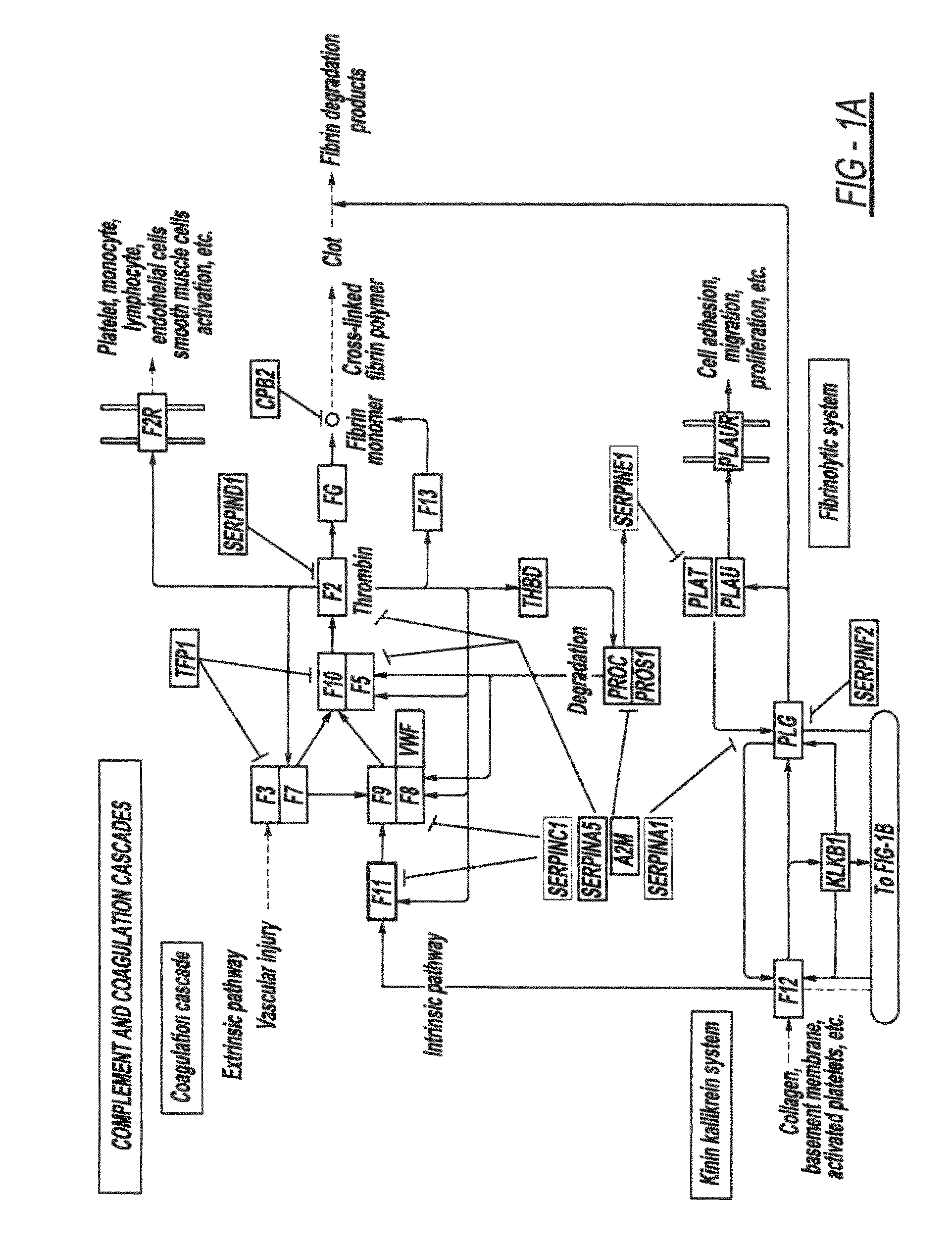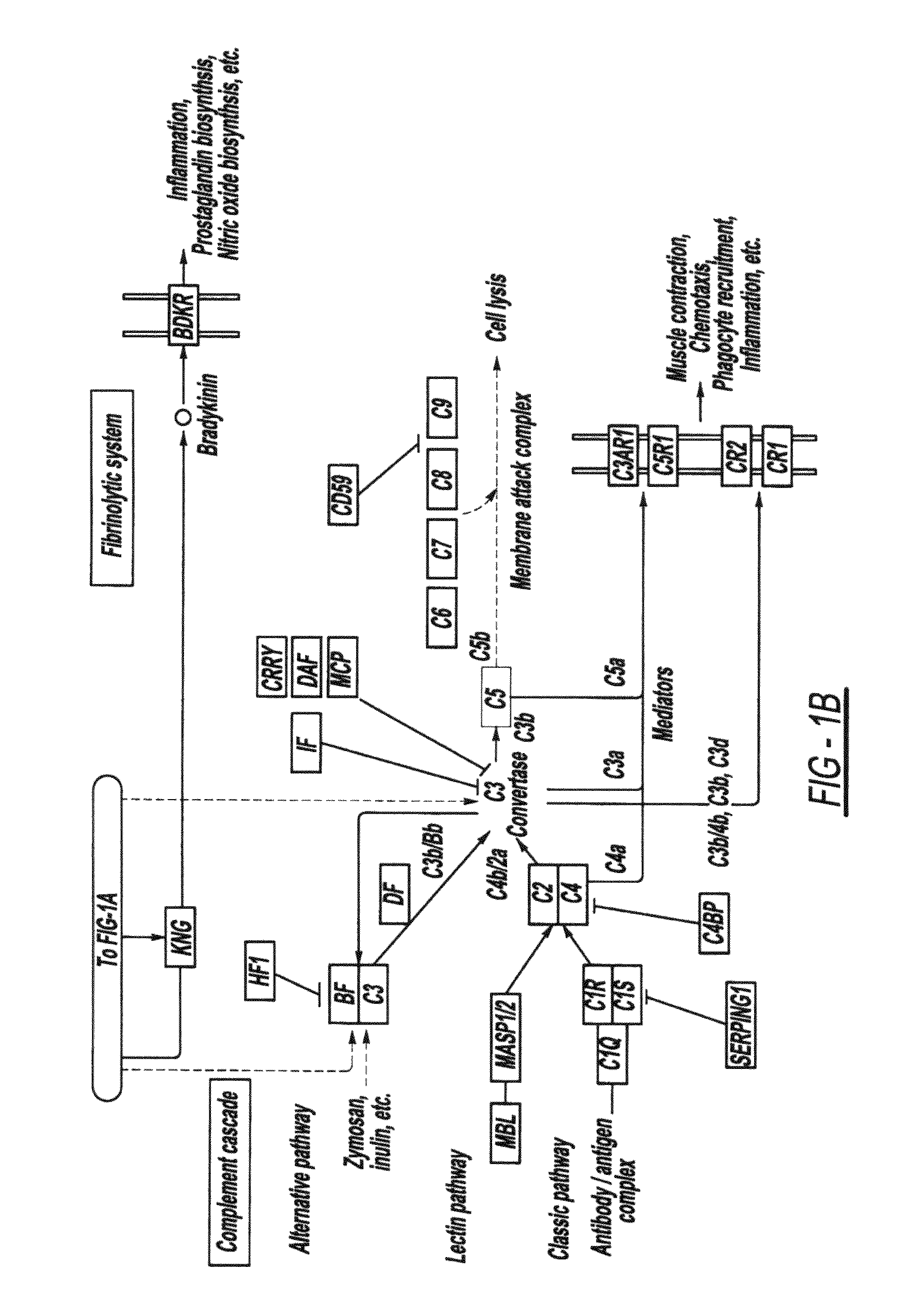Method for analyzing biological networks
a biological network and network analysis technology, applied in the field of biological network analysis, can solve the problems of not being well suited to a system, both ora and fcs techniques currently used are limited, and the annotation type, quality and structure are not availabl
- Summary
- Abstract
- Description
- Claims
- Application Information
AI Technical Summary
Benefits of technology
Problems solved by technology
Method used
Image
Examples
example 1
We have used this pathway analysis approach to analyze several data sets. A first such set includes genes associated with better survival in lung adenocarcinoma (Beer et al., 2002). These genes have the potential to represent an important tool for the therapeutical decision and, if the correct regulatory mechanisms are identified, they could also be potential drug targets. The expression values of the 97 genes associated with better survival identified by Beer et al. were compared between the cancer and healthy groups. These data were then analyzed using a classical ORA approach (hypergeometric model), a classical FCS approach (GSEA), and our impact analysis. FIGS. 2A-2C show the comparison between the results obtained with the 3 approaches.
From a statistical perspective, the power of both classical techniques appears to be very limited. The corrected p-values do not yield any pathways at the usual 0.01 or 0.05 significance levels, independently of the type of correction. If the sig...
PUM
 Login to View More
Login to View More Abstract
Description
Claims
Application Information
 Login to View More
Login to View More - R&D
- Intellectual Property
- Life Sciences
- Materials
- Tech Scout
- Unparalleled Data Quality
- Higher Quality Content
- 60% Fewer Hallucinations
Browse by: Latest US Patents, China's latest patents, Technical Efficacy Thesaurus, Application Domain, Technology Topic, Popular Technical Reports.
© 2025 PatSnap. All rights reserved.Legal|Privacy policy|Modern Slavery Act Transparency Statement|Sitemap|About US| Contact US: help@patsnap.com



